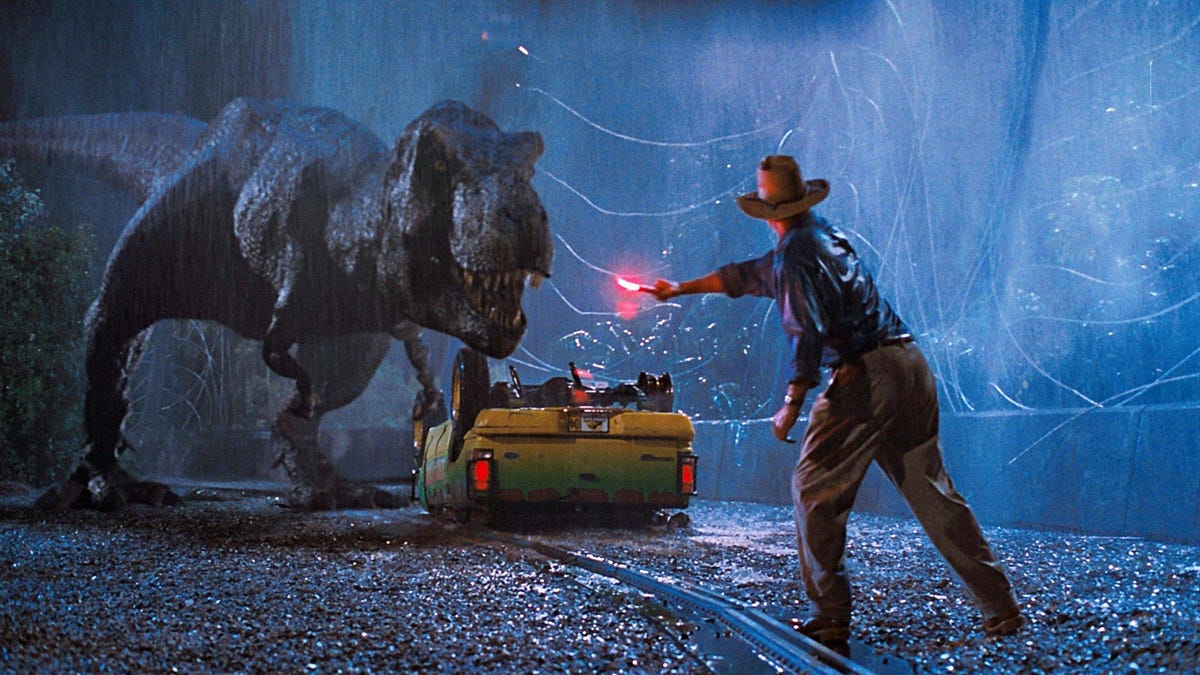No, Elon Musk's Neuralink doesn't have tech to 'build Jurassic Park'
Despite what you may have read, Neuralink hasn't confirmed any involvement in dino DNA projects.

Neuralink isn't building dinosaurs, but it's doing some cool brain experiments.
The last time we heard from Elon Musk's brain-implant startup, Neuralink, it had implanted a small, coin-size device in a pig's brain and listened in to the signals it produced. Musk said the implant was like "a Fitbit in your skull" during an August press conference last year, but the company was still a long way from bringing the product to market.
So, it seemed a little strange to read, in a variety of publications Wednesday, that "Neuralink has the tech to build a real Jurassic Park." The comments, according to the New York Post, were attributable to Max Hodak, co-founder of Neuralink and were quickly traced back to a tweet.
"We could probably build Jurassic Park if we wanted to," Hodak tweeted on Saturday. "wouldn't be genetically authentic dinosaurs but 🤷. Maybe 15 years of breeding + engineering to get super exotic novel species," he continued.
The tweet, and a subsequent declaration about biodiversity, make no mention of Neuralink, but that didn't stop the speculation, presumably because of Hodak's use of the word "we." It appears Hodak was referring to humanity and not the company he co-founded, but you wouldn't know that from the reports, which have continued to trickle out since Hodak's declaration.
We reached out to Neuralink to confirm Hodak's comments but didn't hear back at the time of publication, presumably because the company has real science to work on, rather than field questions about impossible dinosaur resurrections.
The science of bringing dinosaurs back from the dead isn't really as sound as Hodak makes it seem. Humanity would have a tough time building a Jurassic Park in the next 15 years. First, we'd need some DNA from the prehistoric tyrants. Unlike in the film Jurassic Park, where the DNA is retrieved from mosquitoes in amber, that information has completely degraded over the millions of years it has spent in the ground.
However, more recently extinct animals, like the woolly mammoth, may be a good target for "de-extinction." We can still extract DNA from these creatures and could theoretically build and implant a mammoth embryo in a modern-day elephant. The question is: should we? Jurassic Park offers a pretty good reason not to, but mammoths aren't quite as bloodthirsty as Tyrannosaurus rex.
As for Neuralink, the startup has produced two interesting press briefings in the last two years. In 2019, the Neuralink device debuted, and steady progress seemed to have been made in the following year, when the pig implants were revealed. But information is still scant: Musk and Neuralink have published one scientific paper, in the Journal of Medical Internet Research, back in October 2019.

